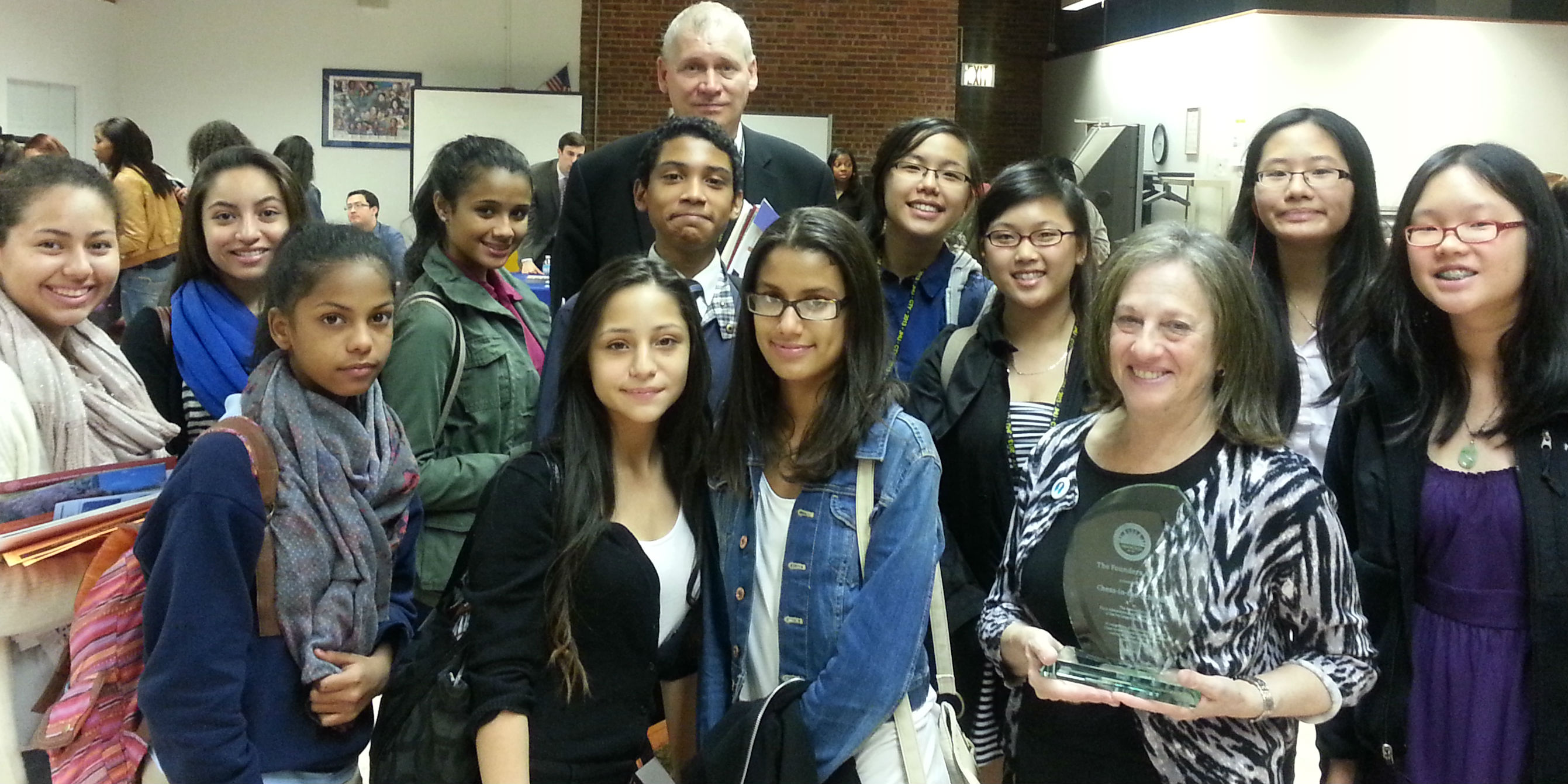 Student loans seem like a financial necessity at first glance. But personal finance expert and best-selling author Eric Tyson warn they can be tricky, especially if you don’t fully understand what you’re getting into.
Student loans seem like a financial necessity at first glance. But personal finance expert and best-selling author Eric Tyson warn they can be tricky, especially if you don’t fully understand what you’re getting into.
“Student loans aren’t inherently ‘bad,’” says Tyson, author of Paying For College For Dummies® (Wiley, April 2020, ISBN: 978-1-119-65147-5, $22.99). “They make sense for many people. But college is expensive, and using loans to pay for it means debt—sometimes a lot of it. Students and parents need to understand what they’re agreeing to before they sign on the bottom line.”
A few facts:
- The total amount of student loans outstanding in the U.S. has surpassed $1.5 trillion, making it the second largest form of debt outstanding by consumers, exceeded only by mortgage debt.
- More than one million student loan borrowers default annually on their loans, and only 57 percent are current on their payments.
- According to LendEDU’s analysis of student loan debt figures at nearly 1,000 four-year private and public higher education institutions across the U.S., the average graduating borrower received their diploma and left campus with $28,565 in student loan debt.
Those are some hefty numbers, and they underscore exactly why you need to know some important facts and instructions about the payment process. Here are a few tips to remember before taking out a loan and when you’re ready to begin making payments.
1. Keep close track of your loans. They can get lost (and you can get behind) in the shuffle. “Especially if you’ve taken loans from numerous sources, total up the amount of debt accumulated,” says Tyson. “Debt surprises are rarely good! And be sure you are tracking all of your student loans as they may well be represented by multiple lenders and/or servicers by the time that college degree is earned.”
2. Have a frank discussion about cosigner responsibilities. If parents have cosigned student loans with their son or daughter, everyone who has cosigned is legally responsible for the repayment of those loans. Of course, different families will have different expectations as to who actually will make the repayments.
“Putting an agreement in writing is a fine idea to ensure that everyone is clear on the plan and so there’s some accountability,” says Tyson. “That’s not to say that a written plan can never change; with discussion and agreement, your plan can be modified.”
3. Know the loan terms (and when payments begin) up front. Whenever you take out a federal government student loan, you will sign a federal student loan promissory note that spells out the terms and conditions of the loan. You can see an example here. Generally, six months after graduation, federal student loan payments begin, says Tyson. You will definitely be hearing from the loan processor(s) for your loans around and continuously after that time. Private loans work differently and have different terms and conditions; if you are considering taking out a private loan, take time to understand the terms before committing.
4. Save money (and make on-time payments) with your loan’s auto-pay feature. “When your student loan repayments begin, I recommend setting them up for automatic payment,” says Tyson. “This feature drafts the money from your bank account monthly on or before the payment due date. In addition to ensuring that you don’t have late payments or missed payments, most loan servicers or lenders will knock 0.25 percent or so off of the effective interest rate you’re paying for using auto payment. Some private lenders may reduce the rate a tad more than that.
“One potential downside to putting your student loan repayments on auto-payment would be if it ever leads to your bank checking account being overdrawn,” he adds. “So, be sure you’re keeping a close eye on your account balance so that nasty surprise doesn’t occur.”
5. Understand loan forgiveness conditions. There are a number of conditions under which a portion or all of government student loans can be discharged or forgiven. Most commonly this occurs because the student-borrower is working in a field of public service. However, this may also occur when the student-borrower suffers adverse health conditions.
Borrowers who are working in education, government, military, certain nonprofit organizations (not labor unions or partisan political organizations), law enforcement, or public health may be eligible for the Public Service Loan Forgiveness program. To be eligible, borrowers must have completed 120 monthly (that’s 10 years’ worth) on-time payments. Borrowers must also be working full-time in public service and be paying their loans back under an income-driven repayment plan. For more information, click here. Unfortunately, the other conditions under which student loan balances can be discharged are less pleasant to consider. This can happen if the student-borrower suffers a long-term disability or passes away. To learn more, click here.
6. Know your federal loan repayment options. There are eight different repayment plans/options for your federal student loans. A number of these plans are sensitive to and based upon the student’s income relative to the amount of student loans he has outstanding. The repayment schedule, however, is not tailored to the local cost of living (strangely, there’s an adjustment only for students in Alaska and Hawaii). So, students-turned-workers who are living in high-cost urban areas like New York City, Chicago, Boston, Washington, San Francisco, and so on don’t get any special breaks. Your salary may be a bit higher working for employers in those high-cost areas, which actually undermines your chances and ability to qualify for income-based repayment plans.
Click here to view the repayment plan options for so-called direct and federal family education student loans.
7. Stay open to the possibility of refinancing. By the time a student graduates and begins loan repayment, interest rates on new, comparable loans may be lower. When that occurs, it may be possible to refinance some of your student loans with a private lender at a lower interest rate than you are currently paying.
“When contemplating a refinance, compare the interest rate being offered on a new loan to the rate you are paying on your existing student loans,” says Tyson. “If the rate is lower on a new loan that would provide you with funds to pay off some of your existing loans, then consider refinancing. Just be aware that lenders can make a refinance appear attractive by showing you how it can lower your monthly payments—but that can always be done by offering you longer-term loans. Your total payments and total interest paid will be higher if you fall for this trick.”
8. Ask for relief if you need it. Hard times can happen, and as a result, you may struggle to make your required monthly loan payments. The good news is, you may qualify for some relief from making your federal student loan payments until you can afford to do so again. There are two ways in which you may qualify for what is called “forbearance” of your federal student loans.
You can request general forbearance if you are temporarily unable to make your scheduled monthly loan due to financial difficulties, medical expenses, change in employment, or other reasons acceptable to your loan servicer. General forbearance is granted for no more than 12 months at a time. Under other circumstances (for example, you are serving in a medical or dental internship or residency program, and you meet specific requirements), you may be eligible for a mandatory forbearance, in which your loan servicer is required to grant the forbearance. For more details, click here.
9. Make use of the student loan interest deduction. You may take up to a $2,500 federal income tax deduction for each tax (calendar) year for student loan interests that you pay on IRS Form 1040 for college costs as long as your modified adjusted gross income (AGI) is less than or equal to $70,000 for single taxpayers and $140,000 for married couples filing jointly. This tax deduction is phased out if your AGI is between $70,000 and $85,000 for single taxpayers and between $140,000 and $170,000 for married couples filing jointly. (These AGI amounts are for tax year 2020.)
“This deduction is not an itemized deduction, so anyone can take it on her Form 1040 as an ‘adjustment to income,’” says Tyson. “Each of your lenders should be able to provide you with a yearly summary that shows how much you paid in interest for the tax year. If you paid $600 or more in interest to a single lender, that lender is required to provide you with Form 1098-E, which documents the interest you paid for the year. Otherwise, ask your lender or loan servicer what you paid in interest for the year in question.”
10. You can pause your loans if you return to higher education. Getting a college degree may not be the end of a person’s higher education. Returning to school at least half-time enables those who have subsidized federal government student loans to hit the pause button on those loans. Remember that with subsidized federal student loans, interest does not accumulate, and no loan payments are due while the student is in school. However, private student loans and nonsubsidized federal student loans are, of course, a different matter. The interest keeps accumulating on those even if a former college graduate returns to school at least half-time. And, with some private student loans, you won’t be able to defer making payments and will need to make payments regardless of your student status.
“If you take out student loans for college, they will be a part of your life for years to come, and you should approach them with eyes wide open,” concludes Tyson. “But if you handle them with responsibility, they can be a smart investment in your future.”
About the Author
Eric Tyson is the author of Paying For College For Dummies®. He is a syndicated personal finance writer, lecturer, and counselor. He is dedicated to teaching people to manage their personal finances better. Eric is a former management consultant at Bain & Company to Fortune 500 financial service firms. Over the past three decades, he has successfully invested in securities as well as in real estate, started and managed several growing businesses, and earned a bachelor’s degree in economics at Yale and an MBA at the Stanford Graduate School of Business.
An accomplished freelance personal finance writer, Eric is the author of four other national bestsellers in the For Dummies® series, including Personal Finance For Dummies, Investing For Dummies, Home Buying For Dummies, and Real Estate Investing For Dummies (which he coauthored). Eric was an award-winning journalist for the San Francisco Chronicle/Examiner. His work has been featured and praised in hundreds of national and local publications, including Kiplinger’s, the Wall Street Journal, Money, the Los Angeles Times, the Chicago Tribune, and on NBC’s Today show, Fox News, PBS’s Nightly Business Report, Fox Business, CNBC, CNN, the Oprah Winfrey Show, ABC, Bloomberg Business Radio, CBS National Radio, and National Public Radio.
Eric has counseled thousands of clients on a variety of personal finance, investment, and real estate quandaries and questions and is a much-sought-after speaker.
You can visit him on the web at www.erictyson.com.
About the Book
Paying For College For Dummies® (Wiley, April 2020, ISBN: 978-1-119-65147-5, $22.99) is available at bookstores nationwide, from major online booksellers, and direct from the publisher by calling 800-225-5945. In Canada, call 800-567-4797. For more information, please visit the book’s page on www.wiley.com.
Become a Harlem Insider!
By submitting this form, you are consenting to receive marketing emails from: Harlem World Magazine, 2521 1/2 west 42nd street, Los Angeles, CA, 90008, https://www.harlemworldmagazine.com. You can revoke your consent to receive emails at any time by using the SafeUnsubscribe® link, found at the bottom of every email. Emails are serviced by Constant Contact








